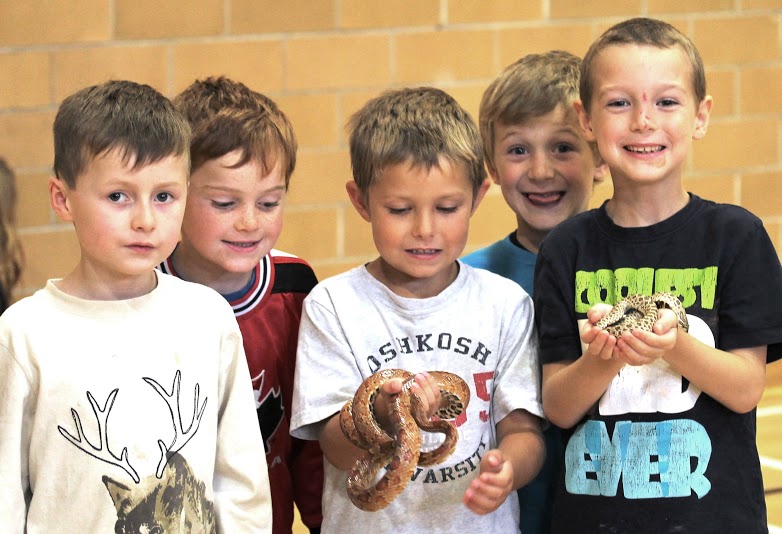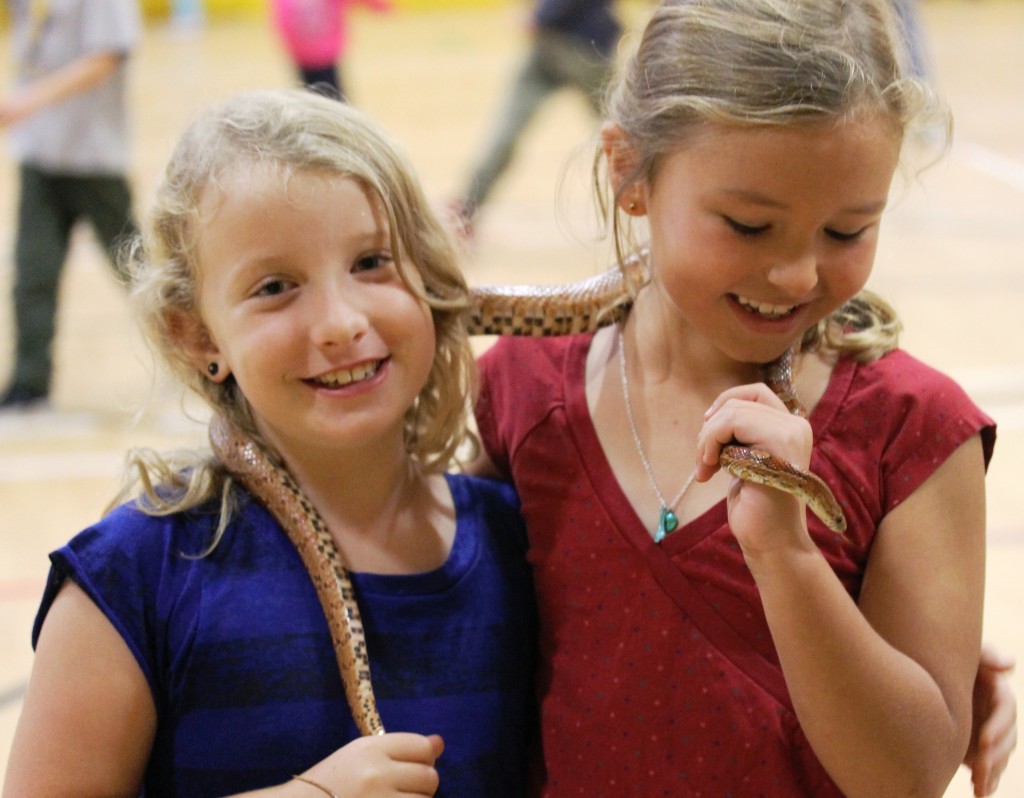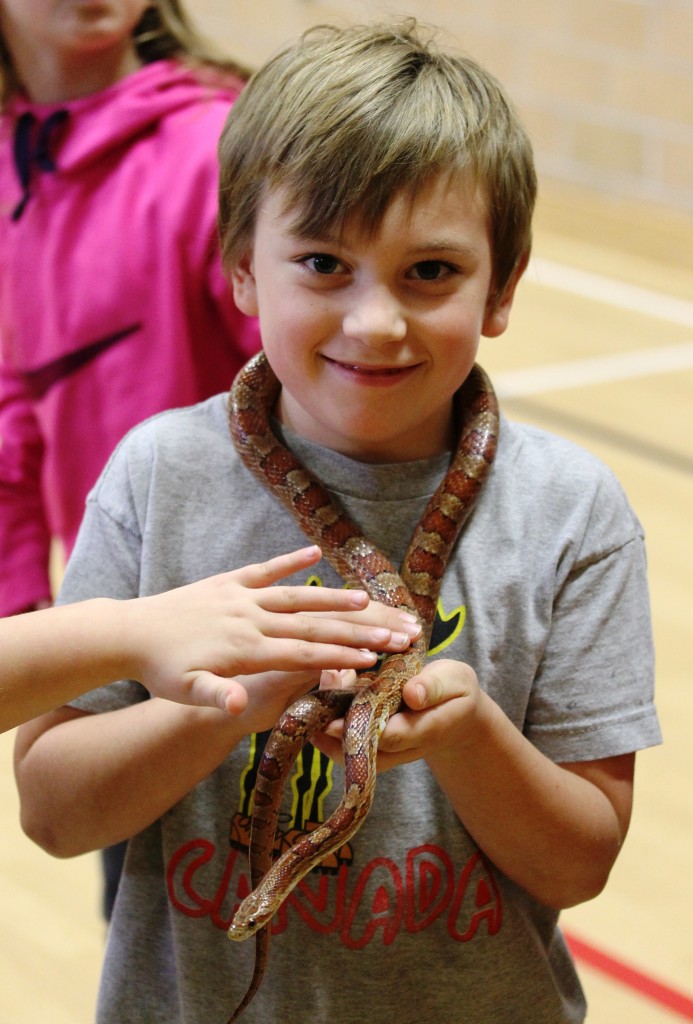An essential part of reptile conservation is education and outreach. Educating the public about native reptile species can help to change negative attitudes and dispel myths. That is why Jory Mullen (Lead Species at Risk Tech) and I (Monique Aarts, Species at Risk Tech) set out on a whirlwind Reptiles at Risk Tour around Huron County this October. We had help from Elizabeth Milne from the Nature Conservancy of Canada as well as a very dedicated volunteer, Bill Dineen. Our team visited 1 high school and 8 elementary schools reaching 1970 students from Kindergarten to Grade 11!
Our program was unique because we brought in live, captive-born animals for students to learn about and interact with. For the first half of the program each species was introduced to the students along with some important information. We wanted to introduce kids to the species they might actually find in their backyard so 5 out of the 7 reptile species we brought in can be found in Huron County.
SNAKESSSS!
The live native snake species we presented to the students included a Garter Snake, Milk Snake, and a Hog-nosed Snake. We also talked about one of the rarest snake species in Canada; the Queensnake. The Queensnake is special because it is endangered but you can find it in Huron County!
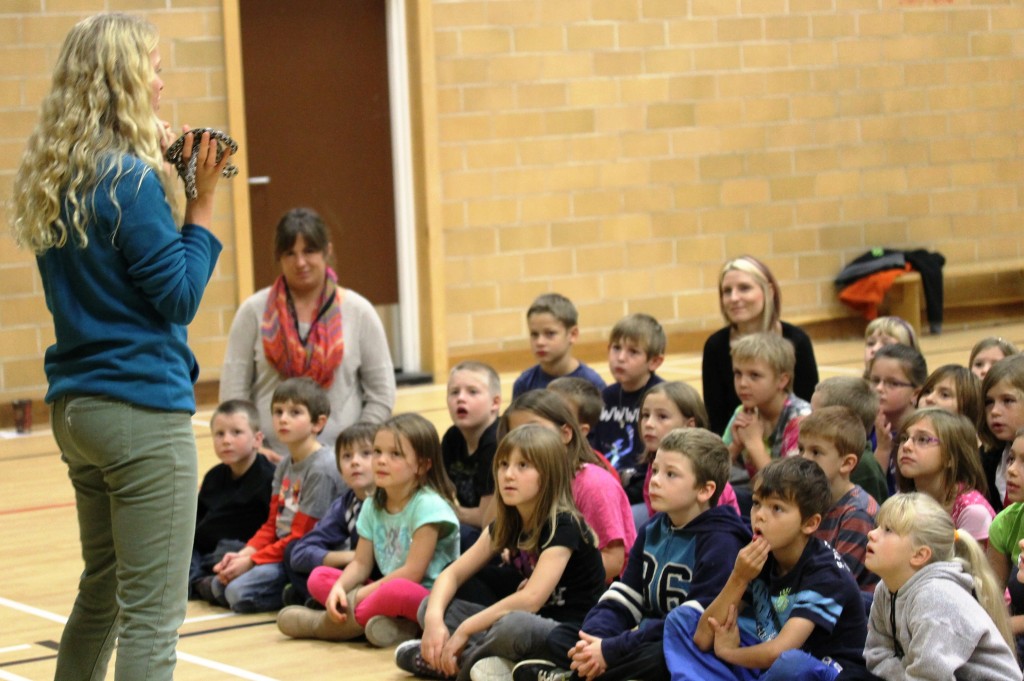
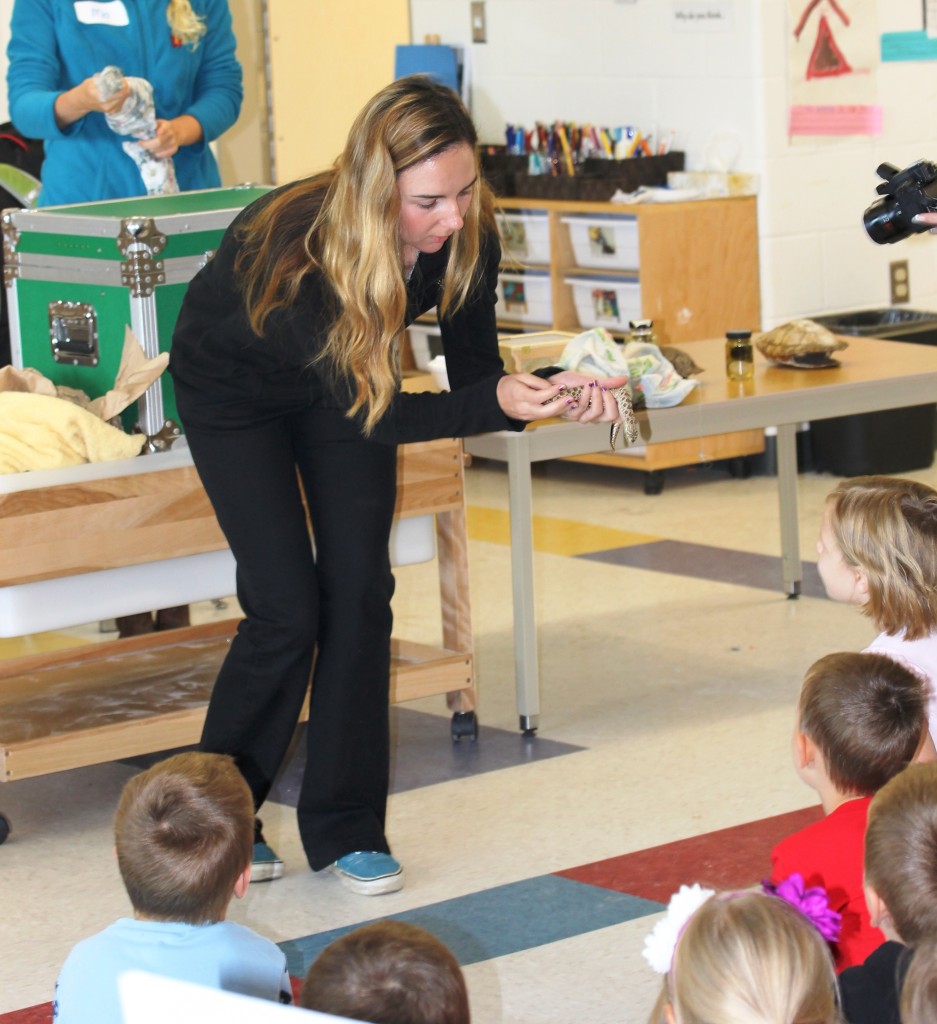
Snake Facts:
-
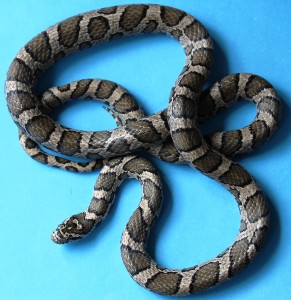
Milksnake The term ‘cold-blooded’ is a misnomer because snake’s blood is not always cold. In fact, their blood can be much warmer than ours. Instead we say snakes (and other reptiles) are ECTOTHERMIC. This means the temperature of their body depends on the temperature of their surroundings. For example, if you put a snake on a hot rock, the snake will be the same temperature as that rock.
- Snakes are NOT SLIMY! They do not produce oils or sweat. Snakes are drier and cleaner than us!
- Milk Snakes are often mistaken for Rattlesnakes and killed out of fear. Rattlesnakes are much more scared of us than we are of them! LEAVE THEM BE! Before you handle a snake, know what species it is.
-
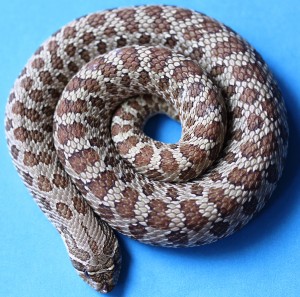
Hognose Snake Rattlesnakes do not live in Huron County, but if you are bitten in a geographical area where they are found calmly go to the hospital (but remember that the road to the hospital is MUCH more dangerous than the Rattlesnake that bit you). There have only been 2 deaths from a Massasauga Rattlesnake in the past 200 years in Ontario (the last one was over 50 years ago when a child was bitten and not taken to the hospital).
- 11 out of the 17 snake species that live in Ontario are listed as Species at Risk! Half of these 11 species are listed as endangered.
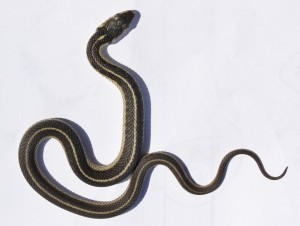
Turtles!
Next, we introduced two of the most commonly seen turtle species in Ontario; the Painted Turtle and the Snapping Turtle.

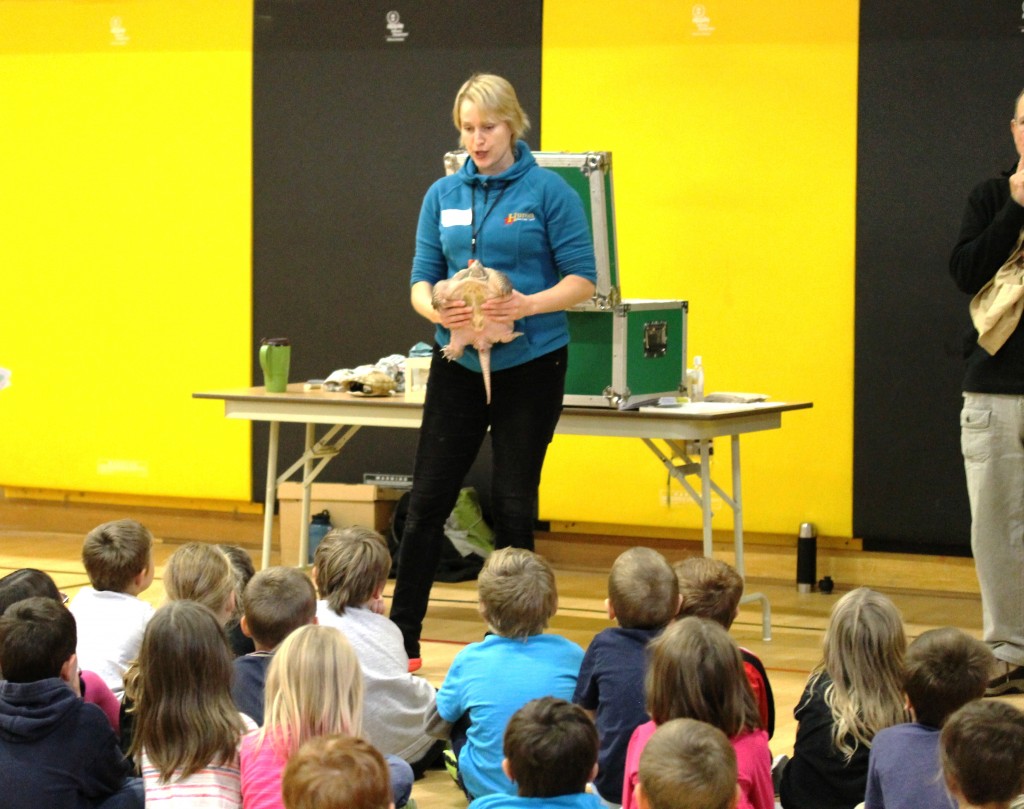
Turtle Facts:
- Female turtles must leave the water to lay their eggs on land and in doing this they often have to cross many roads. Many turtles are hit on roads in the spring. The death of these turtles is especially negative because reproducing females and their offspring are the victims. Removing even a few breeding females from a population each year will result in EXTIRPATION. This means a population is removed and is considered locally extinct.
- WE CAN HELP!!! Move turtles across the road- be sure to move them in the direction they were heading, not back to the water.
- DO NOT take turtles home as pets- it is AGAINST THE LAW! When you remove a turtle from the wild, it can’t reproduce to create offspring, so it no longer exists in the population (i.e. you’re killing it).
- Snapping Turtles have a tiny belly shell (plastron) compared to other turtles. Snapping is the only way they can protect themselves because they cannot fully pull into their shell like other turtles.
- Snapping Turtles ONLY snap on land. In the water they have no predators and will not snap, so it’s OK to swim near them.
- We need Snapping Turtles! They are like the garbage men of the water because they eat dead and decaying plant and animal matter in our rivers, lakes, ponds and wetlands.
- Snapping Turtles need help across the road too. Can often get them to snap onto a stick and drag them across the road (turtle on a leash). Otherwise, push or scoop with a stick or shovel. Or grab and carry from the back of the shell (avoid the head). DON’T carry them by their tail– you can hurt their backbone.
- 7 out of Ontario’s 8 turtle species are listed as Species at Risk.
Reptiles as Pets!
If you are interested in keeping a reptile as a pet there are some non-native, captive-bred options that make suitable pets. For this section we introduced 4 Corn Snakes and a Three Toed Box Turtle.

Pet Take Home Messages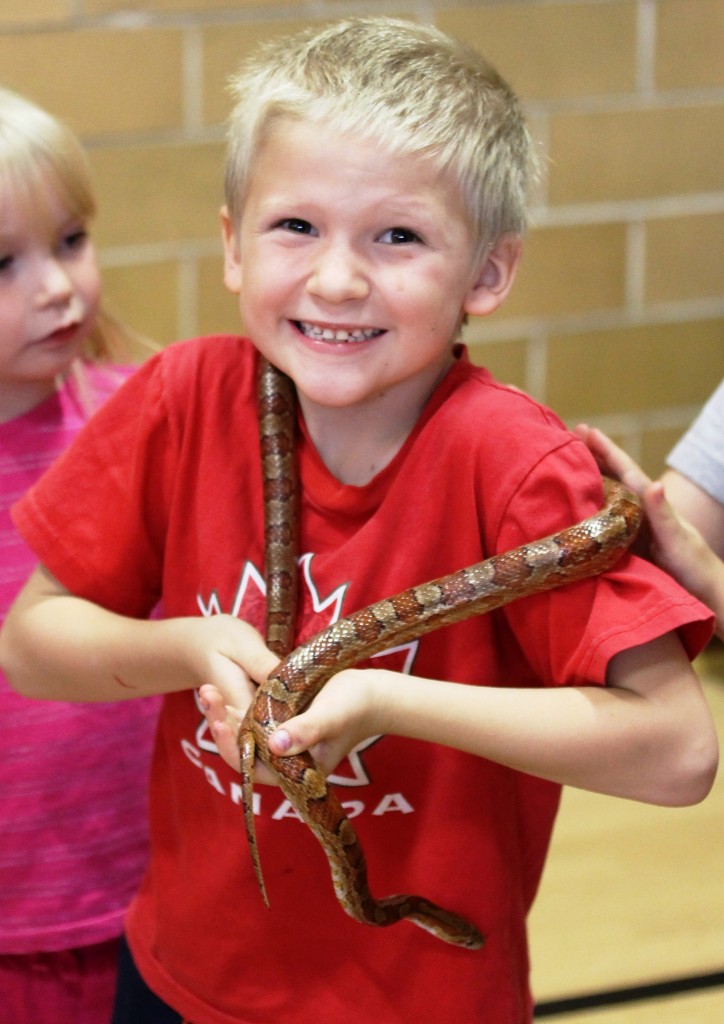
- Leave wild animals in the WILD! Most Ontario reptile species are illegal to own, and the remainders you need a special licence for.
- Corn Snakes and Box Turtles are good pet choices because they are born in captivity, don’t grow too large, their habitat requirements are simple (i.e. don’t require tropical climate or special foods). PLUS, Corn Snakes come in almost any color and are hypoallergenic!
- Keep in mind that these pets are not always a good choice, i.e. Box Turtles can live to be 100 years old. That’s a huge investment in time!
- When considering a pet, any pet, LEARN about them first. For example, one pet owner tried to feed his Corn Snake CORN! They eat mice. There are no vegetarian snakes in the world and he would have starved his snake to death by trying to feed him the wrong food.
Hands on!
Now that the students learned a thing or two about reptiles it was time for the hands on portion. Remember, snakes are clean because they don’t spread zoonotics (diseases that can be transferred from animals to humans) AND you can’t be allergic to them. Each student had the chance to handle each of our snake species. Handling the snakes was an important part of our program as it allowed students to overcome their fears and feel more comfortable around these harmless creatures.
The Outcome
- Almost every student (and many teachers) held a snake, many of them for the first time!
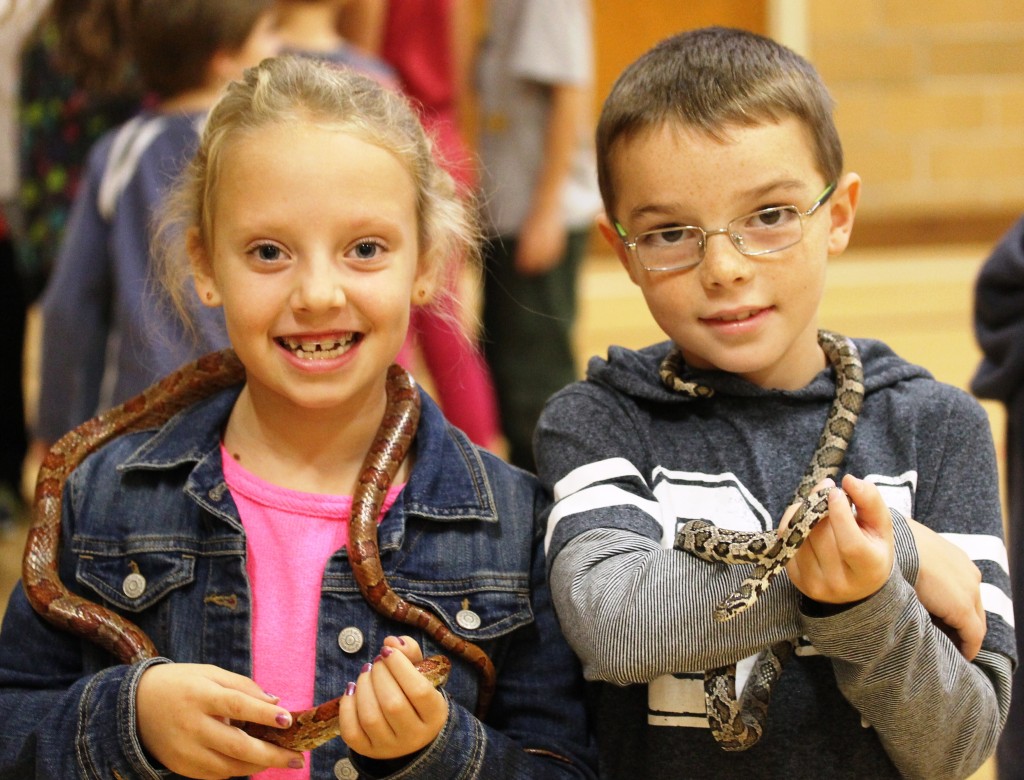
- Many of these students had a fear of snakes. By handling one, their fears were overcome!
- Everyone learned how they can help protect turtles by helping them cross the road.
- Everyone learned to keep wild animals in the wild.
- Students had a blast while gaining knowledge about and an appreciation for our native reptile species.
Please Help us Map our Reptile and Amphibians in Ontario!
You can be a citizen scientist and report your reptile and amphibian sightings to the Ontario Nature Reptile and Amphibian Atlas:
http://www.ontarionature.org/protect/species/herpetofaunal_atlas.php
Each and every sighting is important in the species distribution mapping of reptiles and amphibians in Ontario.
